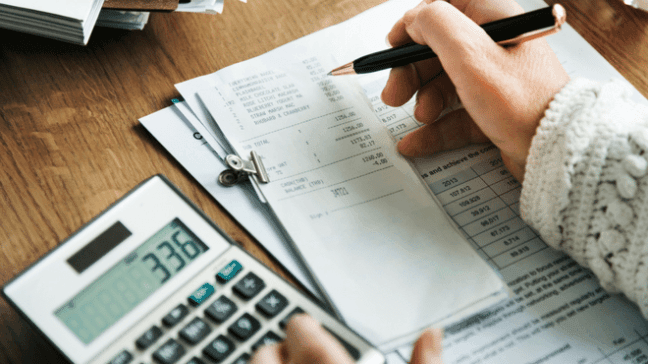
Budgeting should be the cornerstone of your financial house. You should focus on tracking all of your expenses for the month, using a method of your choice listed below in the Tools/Systems section.
Creating a Budget
1. Start with listing your monthly income. Budget out with four weeks of take-home pay. If you’re starting a new job and planning ahead, use an after tax paycheck calculator to get a rough estimate.
- If you’re paid twice per month, you might want to grab your February pay stubs (or a calculator) and see what 10 workdays of pay looks like, then multiply by two. This will help you budget out the worst-case scenario.
- If your monthly income fluctuates, list your worst-case or lower-than-average scenario. Budget out for that instead, and anything that’s left over should be allowed to float in your checking as a buffer.
2. Take a look at your mandatory spending. This is all the spending that is related to safety and survival. This kind of spending includes:
- Mortgage, rent, and insurance.
- Electric, natural gas, water/sewer.
- Groceries
- Transportation
Not included in this list are discretionary items:
- Cable TV / Satellite
- Dining out, bars, and clubs
- Shopping
The Rules of Thumb: You should consider making a major change to your lifestyle if one of the following scenarios is happening:
- Your monthly mortgage/rent is more than 30% of your take home pay. You might want to consider getting a roommate, or moving to some place cheaper.
- Your monthly expenses on your car is more than 15% of your take home pay. You might want to consider carpooling to work, traveling less, or taking the bus or a bike. You may also want to consider moving closer or selling your car, if either’s an option.
- Your groceries cost more than $300 per person. If you’re trying to cut costs, you might want to look at more frugal options for buying groceries, such as buying in bulk, going for store-brand foods, or frequenting less expensive grocery stores.
3. Take a look at your Debts, Goals, and Retirement. How much you put here is subjective, but the faster you take care of this, the quicker you can become financially independent. Take a look at our “I have $X, what do I do with it?” wiki.
4. Discretionary spending is anything that’s left over from your goals. Shopping, hobbies, cable, coffee, fast food, dining, and so on. Just remember: always live within your means, and try to save up for capital expenses before buying.
Tools/Systems
Figure out a tool/system that works for you. There’s a list below.
Commercial Software
- Mint is free and automates much of the process by linking up with most large financial institutions to help track your spending and other aspects of your finances.
- Personal Capital is free and automates much of the process by linking up with most large financial institutions to help track your spending and other aspects of your finances.
- YNAB is commonly recommended here. Currently a subscription service at $7/month (or $83.99/yr)